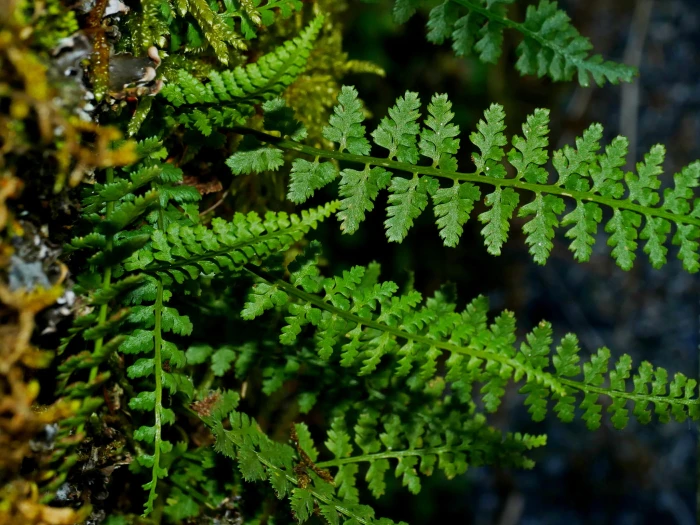Split-Leaf Spleenwort
(Asplenium incisum)
Split-Leaf Spleenwort (Asplenium incisum)
/
/

Jacy Chen
CC BY 4.0
Image By:
Jacy Chen
Recorded By:
Copyright:
CC BY 4.0
Copyright Notice:
Photo by: Jacy Chen | License Type: CC BY 4.0 | License URL: http://creativecommons.org/licenses/by/4.0/ | Rights Holder: Jacy Chen | Publisher: iNaturalist | Date Created: 2021-10-31T09:42:51-07:00 |

























Estimated Native Range
Climate Requirements for Texarkana, Texas
| This Plant | Your Site | Plant Suitability for Your Location | ||
|---|---|---|---|---|
| • Precipitation | 9" - 140" | 47" | Aquatic | Aquatic |
| • High Temp. | 55°F - 93°F | 93°F | Your summer temperatures are normal for this plant. | Excellent |
| • Low Temp. | -27°F - 49°F | 33°F | Your winter temperatures are normal for this plant | Excellent |
This plant should grow well at your location with about N inches per year (Y minutes per month) of irrigation.
Summary
Asplenium incisum, commonly known as Split-Leaf Spleenwort or Forked Spleenwort, is a perennial fern that is evergreen in mild climates but may be semi-deciduous in cooler regions. It is native to Russian Far East, China, and Temperate East Asia. This fern typically grows slowly to a height and width of 0.3-0.5 feet (0.09-0.15 meters), forming a compact clump of deeply lobed, glossy green fronds that give it a delicate, feathery appearance.
Split-Leaf Spleenwort is valued for its unique foliage texture and is often used in shaded rock gardens, as an understory plant in woodland settings, or in containers for patios and indoor spaces. It thrives in part shade, preferring a few hours of sunlight to full shade. The plant requires medium amounts of water and well-drained soil, which can be clay, loam, or sandy in composition. It is relatively low maintenance, but it is important to avoid waterlogged conditions to prevent root rot. While it is not prone to many pests or diseases, it can suffer from leaf spot or rust if conditions are too damp. Split-Leaf Spleenwort is not known to be invasive and does not have aggressive roots, making it a safe choice for most garden settings.CC BY-SA 4.0
Split-Leaf Spleenwort is valued for its unique foliage texture and is often used in shaded rock gardens, as an understory plant in woodland settings, or in containers for patios and indoor spaces. It thrives in part shade, preferring a few hours of sunlight to full shade. The plant requires medium amounts of water and well-drained soil, which can be clay, loam, or sandy in composition. It is relatively low maintenance, but it is important to avoid waterlogged conditions to prevent root rot. While it is not prone to many pests or diseases, it can suffer from leaf spot or rust if conditions are too damp. Split-Leaf Spleenwort is not known to be invasive and does not have aggressive roots, making it a safe choice for most garden settings.CC BY-SA 4.0
Plant Description
- Plant Type: Ferns
- Height: 0.3-0.5 feet
- Width: 0.3-0.5 feet
- Growth Rate: Slow
- Flower Color: N/A
- Flowering Season:
- Leaf Retention: Evergreen
Growth Requirements
- Sun: Part Shade
- Water: Medium
- Drainage: Medium
Common Uses
Border Plant, Low Maintenance, Rock Garden
Natural Habitat
Native to rocky woodlands, cliffs, and crevices
Other Names
Common Names: Forked Spleenwort
Scientific Names: Asplenium incisum , Asplenium elegantulum , Asplenium lanceolatum var. elegans , Asplenium trichomanes
GBIF Accepted Name: Asplenium incisum